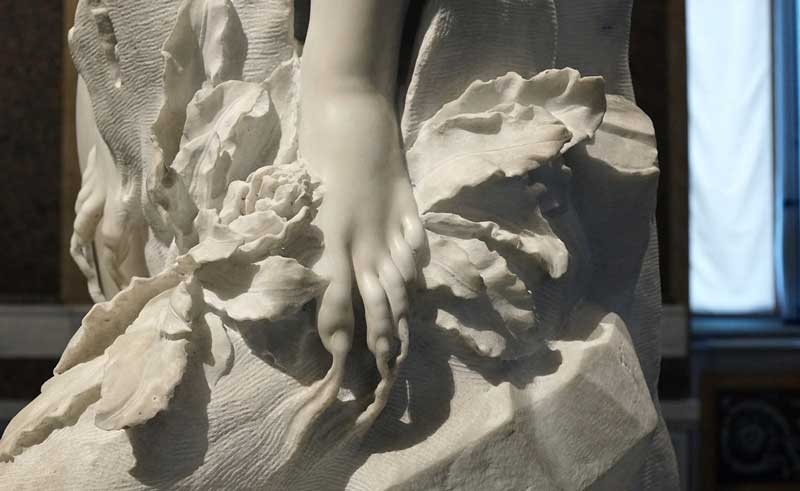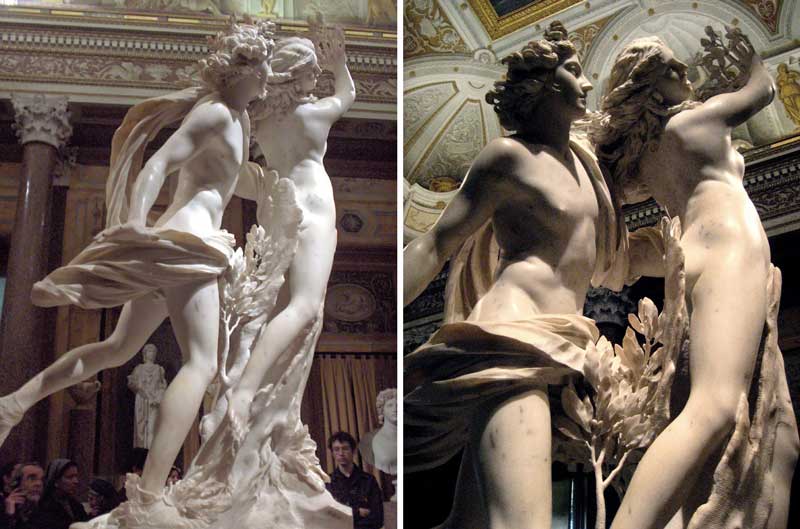
Retold by many Hellenistic and Roman authors, the story of the warrior god Apollo and his relentless love for the nymph Daphne is originally a story from ancient Greek mythology. According to the myth, Apollo the son of Zeus and Leto, was a great archer and once he ridiculed Eros, the god of love, who was using his bows and arrows to shoot darts of love into his targets and advised him not to play with the powerful weapon of a warrior.
Eros felt insulted at his remark and prepared two arrows to teach him a lesson of life. He shot the gold-tipped arrow at Apollo, which made him to fall in love madly with the nymph Daphne the virgin and then shot Daphne with the leaden arrow, instilling in her a deep hatred for Apollo, so that she could never love Apollo back.

Daphne, the beautiful nymph, had by that time spurned many potential lovers and had requested her father, the river god Peneus, to let her remain unmarried. Thus, the prospect of Apollo as her lover was not very rosy. However, she became the unwilling object of the infatuation of Apollo, who elated with sudden love, started to chase her continually against her wishes.
He even tried to make her cease her flight by saying he did not mean to hurt her. To play more mischief, Eros intervened again and helped Apollo to catch up to the desperate girl. Finding no other way to escape, Daphne called upon her father, the river god Peneus, to open the earth to enclose her or to change her form, to make her free from the chasing man from that moment.


Peneus complied with her request immediately and soon a heavy numbness seized her limbs, her soft breasts became surrounded by a thin bark, her hair turned to the foliage, her forearms changed to branches and she was changed into a laurel tree. Apollo lost his hope, as he realised that he can never have Daphne as his wife, but he vowed to tend the laurel and promised that the leaves of laurel would crown victors and that she would remain evergreen.


The myth of Apollo and Daphne has been often explained by many as a battle between chastity (Daphne) and sexual desire (Apollo).
To save her chastity from the lust of Apollo, Daphne is forced to sacrifice her body and become the laurel tree as an act of eternal chastity.

Cardinal Scipione Borghese of the Catholic Church commissioned Apollo and Daphne from the 23-year-old Gian Lorenzo Bernini in 1622.Executed between 1622 and 1625, Apollo and Daphne is a life-sized Baroque marble sculpture by Italian artist Bernini, which depicts the most dramatic scene and the climax of the story. The young Italian sculptor earned international fame for its breathtaking beauty, innovative composition, and technical brilliance. The sculpture, still located in the Galleria Borghese, in Rome, captures the moment of Daphne’s transformation. Just at the instant Apollo lays hands on her, her outstretched fingers grow leaves, her skin turns to bark and her feet are rooted to the ground. She looks wildly into space, wondering about what is happening to her, while Apollo frustratingly realises he will never possess her.